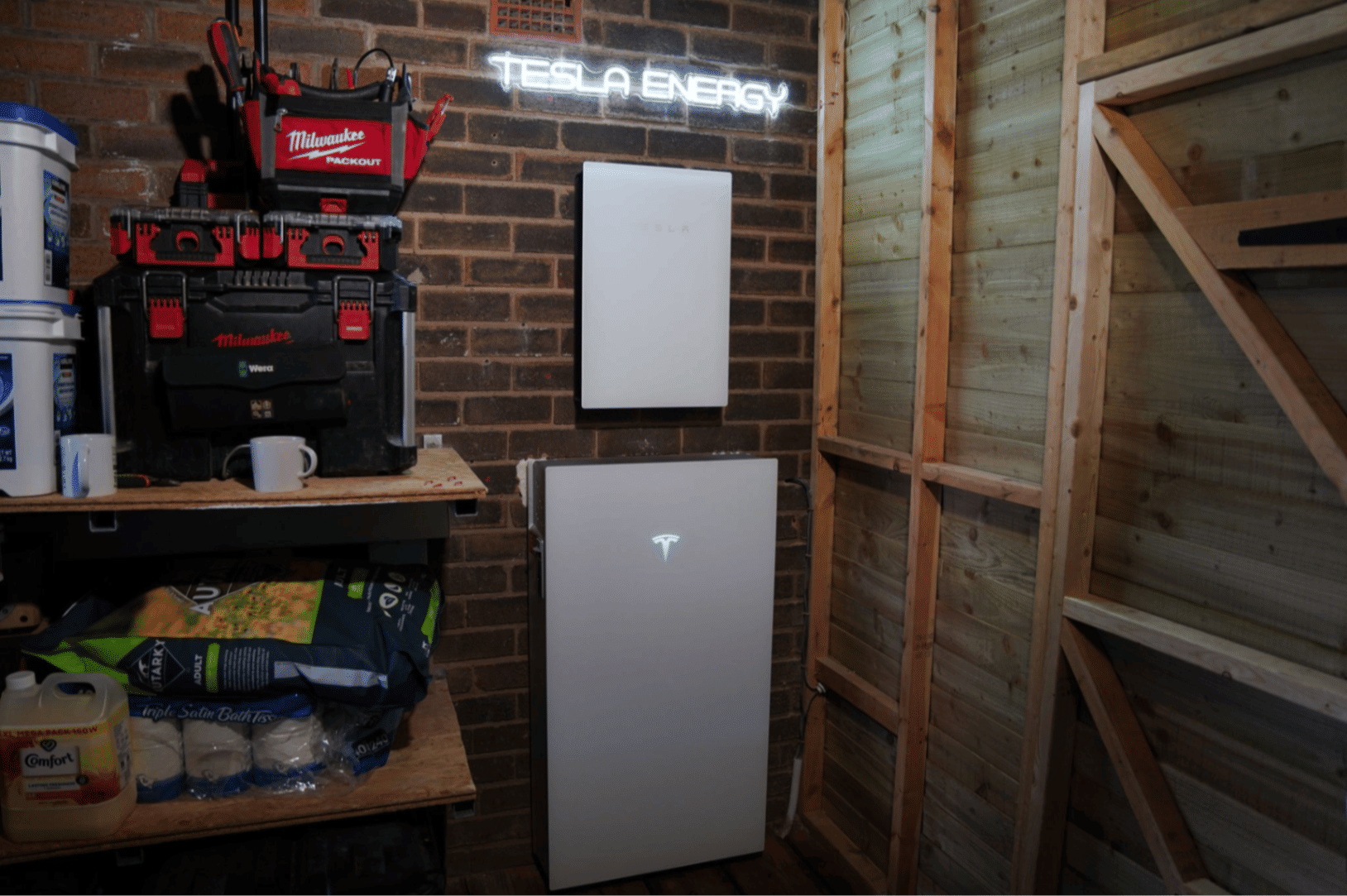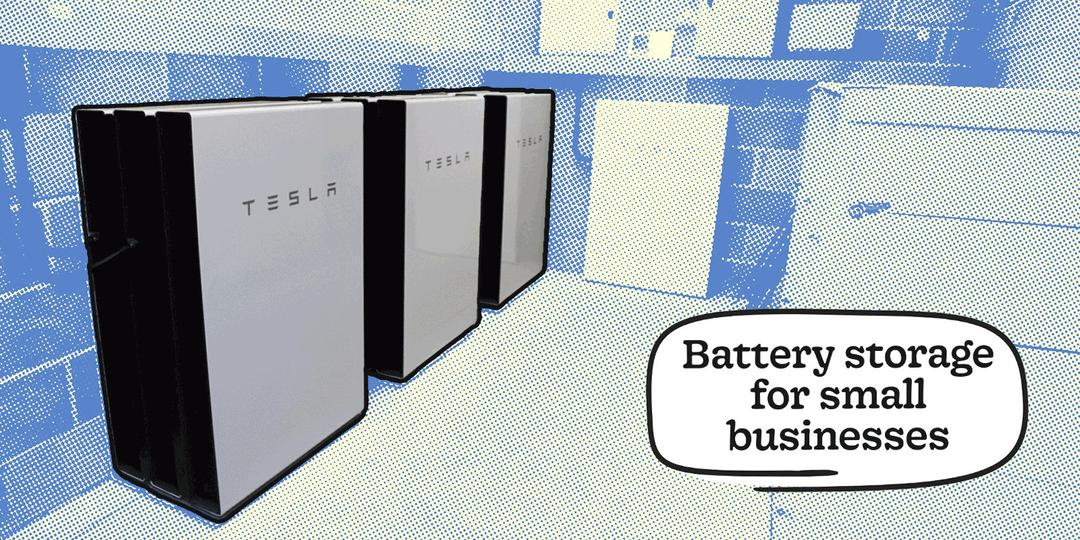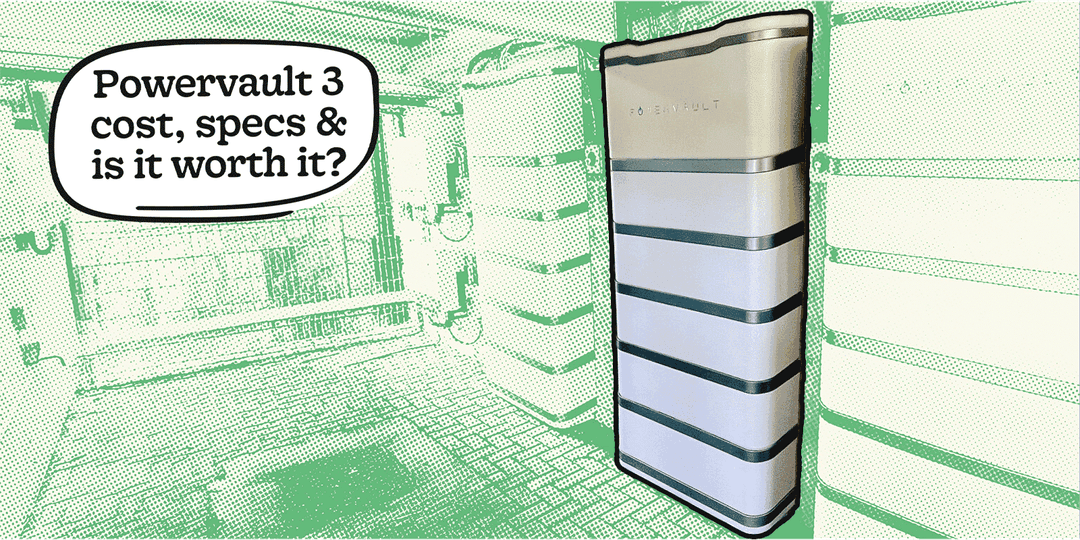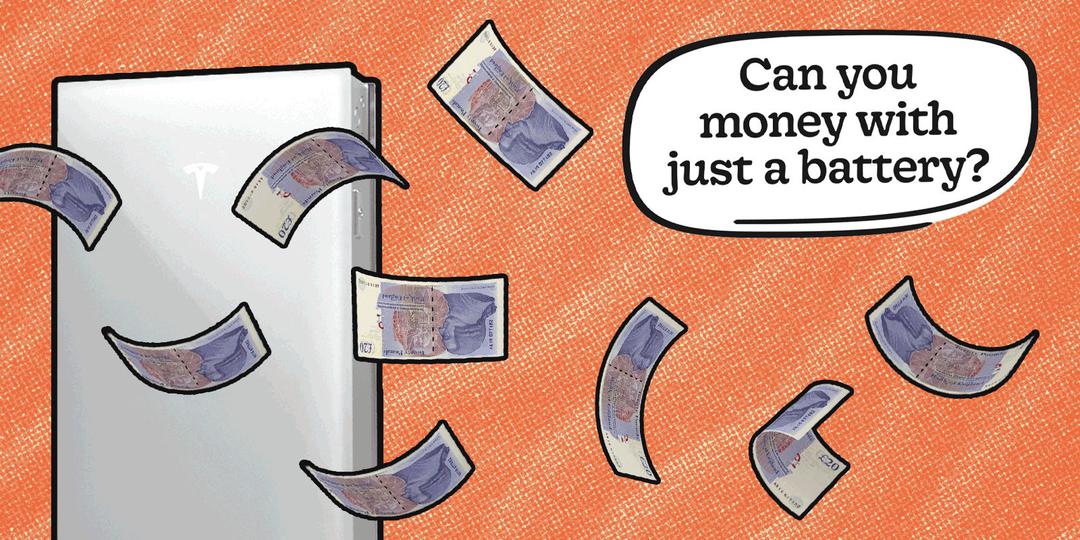Here's how awesome the Tesla Powerwall 3 is, how it's better than the last version and how much it costs...
The Tesla Powerwall has dominated the domestic battery market for years thanks to its sleek looks, impressive reliability, and intelligent features.
Now, the Powerwall 3 has arrived - and it’s more than just a cosmetic refresh. Tesla has completely re-engineered the system from the inside out, combining solar inverter and battery storage into one high-powered, all-in-one unit.
So, what’s actually changed? How does it compare with the Powerwall 2? And crucially, is it worth upgrading or installing from scratch?
Let’s find out…
PS: Heatable are Tesla-approved Premium installers. We offer fixed prices with expert installation, so get a price for a Powerwall 3 here.
Powerwall 3 vs Powerwall 2 - At a Glance
Feature | Tesla Powerwall 3 | Tesla Powerwall 2 |
Usable capacity | 13.5 kWh | 13.5 kWh |
Continuous power | Up to 11.5 kW (software-limit options available) | 5 – 7.2 kW |
Battery chemistry | LFP (Lithium Iron Phosphate) | NMC (Nickel Manganese Cobalt) |
Coupling type | Hybrid (DC) + AC-compatible | AC-coupled |
Solar inputs (UK model) | 3 × MPPT strings (150–480 V) | N/A (separate inverter required) |
Round-trip efficiency | ~90 % (DC-coupled charging more efficient) | ~89 % |
Scalability | Up to 54 kWh (total 4 units) | Up to 135 kWh (10 units) |
Backup hardware | Gateway 2 / Backup Switch | Gateway 2 required |
Cooling system | Fan-assisted active airflow | Liquid-cooled |
Warranty | 10 years (unlimited cycles) | 10 years (unlimited cycles) |
How many can I install? | Up to 4 units (54 kWh) | Up to 10 units (135 kWh) |
Round-trip efficiency | 90% | 89% |
Depth of discharge | 100% | 100% |
AC- or DC-coupled? | Options for both (inbuilt hybrid solar inverter) | AC |
What’s New in the Powerwall 3?
All-in-One Hybrid Design
The Powerwall 3 now includes a built-in solar inverter, meaning one compact unit can both convert and store your solar energy.
For new systems, that eliminates the need for a separate inverter and simplifies installation.
If you already have solar panels, it still plays nicely with existing string inverters or microinverters, so you can add battery storage without tearing out your current setup.
This hybrid setup also means direct DC-to-DC charging - far more efficient than the Powerwall 2’s AC-coupled design, where energy had to be converted twice (solar DC → AC → DC → AC).
More Power, Same Capacity
While the usable capacity stays at 13.5 kWh, output has leapt dramatically. The Powerwall 3 can deliver up to 11.5 kW of continuous power - that’s more than double the Powerwall 2, and enough to comfortably run an entire modern home, even with high-demand appliances such as an EV charger or heat pump.
If the full 11.5 kW output is a bit too spicy for your local grid operator, Tesla allows it to be software-limited to 3.68 kW for G99 compliance - no hardware change needed if your DNO later relaxes limits.
Expandable Storage
Need more capacity? You can add up to three extra 13.5 kWh DC modules, giving a total of 54 kWh - ideal for large homes or EV-heavy households looking for near-complete energy independence.
🎥 Prefer video? We have reviewed the Powerwall 3 on our YouTube channel below:
Inside the Powerwall 3: What Changed Under the Hood
New LFP Battery Cells
Tesla has switched from nickel-manganese-cobalt (NMC) cells to Lithium Iron Phosphate (LFP) - a chemistry that’s safer, longer-lasting, and cobalt-free.
LFP cells handle heat better, are less prone to degradation, and remove the ethical and supply-chain issues associated with cobalt mining.
Simplified Cooling System
The Powerwall 3 ditches the Powerwall 2’s liquid-cooling loop in favour of a fan-assisted aluminium heatsink.
Air is drawn in from below and channelled along the front and rear of the casing, using convection and forced airflow to keep temperatures stable.
It’s quieter, lighter, and better suited to typical UK installation spots such as garages, lofts or side walls.
Refined Build & Design
The new model is slightly shorter and narrower, with the aluminium housing doubling as a heat sink. While it looks a touch more industrial, it’s built for function and durability - and the compact footprint makes wall-mounting or side-by-side setups easy.
Performance & Efficiency
Real-World Power
The Powerwall 3’s 11.5 kW continuous output is roughly 60 % higher than the Powerwall + and 120 % higher than Powerwall 2.
That’s enough for whole-home backup and EV charging without tripping limits. Up to four Powerwall 3s can run in parallel, delivering a colossal 40 kW inverter capacity and 54 kWh storage.
Efficiency & Charging
By charging the battery directly in DC form, the Powerwall 3 reduces conversion losses to around 3 %, compared with 7–8 % on AC-coupled systems.
Tesla lists round-trip efficiency at 90 %, but under solar-charging conditions it can reach 96 %+.
Do note that the charge rate caps at around 5 kW, so in very sunny conditions you might export surplus power rather than fill the battery faster - but this slower rate actually extends lifespan and minimises degradation.
Backup Power & Off-Grid Capability
During a grid outage, the Powerwall 3 can automatically isolate your home and keep key circuits or the entire property running.
Whole-Home Backup
Thanks to that 11.5 kW rating, most UK homes can stay fully powered. Lights, appliances, internet, even EV chargers can keep running - though naturally, runtime depends on battery charge and whether solar is available to top it up.
Backup Hardware
Backup requires either Tesla’s Gateway 2 or the new Backup Switch (US-only for now). Both monitor grid supply and switch seamlessly in milliseconds.
Off-Grid Use
While the Powerwall 3 is technically capable of “grid-forming”, Tesla hasn’t certified it for full-time off-grid use in the UK yet, mainly because it can’t integrate external generators.
For true off-grid living, a dedicated hybrid inverter (e.g. from GivEnergy or Sungrow) is a better bet.
Solar Inputs & System Design
The UK variant of Powerwall 3 includes three independent MPPT trackers, each handling around 13 A at 150 – 480 V.
That allows up to three strings of panels (around 6–7 kWp each). The combined maximum solar input is roughly 20 kWp, which is far above typical domestic installations - but brilliant for large or future-proofed arrays.

Image showing the Tesla Powerwall 3.
Designers note: the upper voltage limit means slightly shorter strings versus some third-party inverters, but it’s rarely restrictive in UK climates.
Explore a Battery Storage Case Study: Check out an insightful Q&A session featured in one of our detailed case studies on battery storage. Hear directly from a Heatable customer in the UK and gain valuable perspectives on their experience here.

The image above features a Tesla Powerwall 3 installation performed by our team of Tesla-certified installers at Heatable.
Performance & Efficiency
The Powerwall 3 has made significant strides in both performance and efficiency. With an impressive 11.5 kW continuous power rating while on-grid, it more than doubles the 5 kW output of the Powerwall 2.
This increase in power capacity makes the Powerwall 3 not only more capable of meeting higher energy demands but also the most powerful domestic battery currently available.
This enhancement is particularly beneficial for households with higher energy consumption, enabling them to run more appliances simultaneously and reducing reliance on grid electricity during peak usage times.
In terms of efficiency, both models have similar round-trip efficiency, which measures the energy lost during the storage and retrieval process, typically as heat. The Powerwall 2 has a round-trip efficiency of 89%, while the Powerwall 3 has a slightly improved efficiency of 90%.
Although this 1% increase might seem marginal, it represents a step forward in energy conservation. Higher round-trip efficiency means more of the stored energy can be used, which enhances the overall cost-effectiveness and environmental benefits of the battery system.
Regarding depth of discharge, which indicates the usable capacity relative to the battery’s maximum capacity, both Powerwall models boast a 100% depth of discharge.

Image showing the Tesla Powerwall 3 in Garage setting.
This feature ensures that users can utilise the entire capacity of the battery without risking damage or significantly reducing the battery’s lifespan.
This is crucial for maximising the return on investment for homeowners, as they can fully benefit from the energy they store, whether for use during power outages or to offset peak energy costs.
Furthermore, the built-in solar inverter in the Powerwall 3 simplifies the installation process. For Powerwall 2, users needed to install a separate inverter to convert DC power generated by solar panels to AC power used by home appliances.
The integrated inverter in Powerwall 3 reduces the complexity and cost of installation, making it more accessible for homeowners looking to integrate solar energy solutions.
Overall, the Powerwall 3’s advancements in power output, efficiency, and design integration make it a significant upgrade over the Powerwall 2, providing homeowners with a more robust and efficient energy storage solution.
Check out our guide on the best electricity tariff for battery storage here.
Tesla Powerwall 3 Warranty
The Powerwall 3, like the Powerwall 2, comes with a 10-year warranty, maintaining the same standard in terms of coverage duration. In the energy storage industry, a 10-year warranty is typical, reflecting common practices among manufacturers.
Battery capacity naturally deteriorates over time, so most manufacturers guarantee a certain level of performance by the end of the warranty period.
In this case, Tesla guarantees that your Powerwall will retain up to 70% of its original capacity after 10 years. This retention rate is quite standard across the industry.
However, what sets Tesla apart is their unlimited cycle coverage. A battery cycle is a measure of the battery’s lifespan, with each full charge and discharge constituting one cycle.
Typically, warranties are tied to a specific number of cycles, meaning that once the designated cycle count is reached, the warranty expires.
With Tesla’s unlimited cycle coverage, there is no cap on how much or how often you can use your battery. This means that regardless of the number of cycles your Powerwall completes, the warranty remains valid for the full 10-year period.
This feature provides users with greater flexibility and assurance, knowing that their battery usage is fully supported without restrictions.
Overall, the Powerwall 3 continues Tesla’s tradition of offering robust warranty terms, ensuring long-term performance and reliability for homeowners.
This combination of a standard 10-year warranty and unlimited cycle coverage makes the Powerwall 3 a compelling choice in the market.
For an in-depth analysis of premier battery storage systems, consult our best solar battery guide.
How Much Does the Telsa Powerwall 3 cost?
A Tesla Powerwall 3 costs around £6,895 through Heatable (we are Tesla Certified Premium Installers too). If you buy the battery on its own, you’ll also need to purchase the supporting hardware with it and pay for installation, which combined will add roughly £1000-£2,500.
This pricing benefits from the new VAT regulations, effective from February 1st, 2024, which exempt Powerwall installations from VAT
charges.
To explore the complete range of Tesla Powerwall products we offer, along with prices, check out our Tesla Powerwall range here.
Why Should You Choose the Tesla Powerwall 3?
The Tesla Powerwall 3 represents a significant upgrade from its predecessor, the Powerwall 2, continuing Tesla’s leadership in the domestic battery storage market.
The most notable improvement is its all-in-one (hybrid) system design, which includes a built-in solar inverter.
This integration simplifies the installation process and reduces costs, eliminating the need for a separate inverter. It is also compatible with existing solar arrays and microinverters, allowing for easy upgrades without major system overhauls.
Performance-wise, the Powerwall 3 offers a substantial increase in power capacity, delivering 11.5 kW of continuous power - more than double that of the Powerwall 2.
This enhancement ensures that the Powerwall 3 can meet higher energy demands, making it capable of running more appliances simultaneously and providing robust support during peak usage times.
Additionally, both models feature a 100% discharge depth, maximising the battery's usable capacity.
In terms of efficiency, the Powerwall 3 has a slightly improved round-trip efficiency of 90%, compared to the Powerwall 2’s 89%.
This marginal improvement means more of the stored energy can be utilised, enhancing the overall cost-effectiveness and environmental benefits of the system.
The Powerwall 3 also offers expandability with up to three additional 13.5 kWh battery units, allowing for a combined total of 54 kWh.
This modular approach provides flexibility for households with higher energy needs or those seeking greater energy independence.
While the Powerwall 2 can be expanded up to 10 units, the average UK home typically does not require such a large capacity.
Tesla’s warranty terms remain robust, with both Powerwall models covered for 10 years. The unlimited cycle coverage is a standout feature, allowing users to utilise the battery as much as needed without affecting the warranty.
Overall, the Tesla Powerwall 3’s advancements in design, performance, efficiency, and reliability make it a compelling choice for modern energy storage needs.
It offers enhanced features, robust warranty terms, and compatibility with existing solar systems, providing homeowners with a powerful and future-proof solution for their energy requirements.
🎥 Check out our Tesla Powerwall 3 installation from start to finish in our YouTube video below:
Next Steps For Your Battery Journey:
When planning to install battery storage for your home, there are several important factors to consider. Make sure to refer to the following guides to help you make informed decisions:
To dive deeper into these topics, head over to our advice section, check out our YouTube channel for informative videos, or read a customer case study to see how others have benefited from their battery installation.
Get a Quote for a Tesla Powerwall Today
Without boasting you should get your battery storage installed with us, here's why:
Thousands of Happy Customers: We boast an average score of 4.9 on Trustpilot, outperforming the market leader.
Which? Trusted Trader: Heatable is proudly recognised as a Which? Trusted Trader.
Tesla Certified Installer: Heatable is proudly certified and approved by Tesla to install the Powerwall.
MCS Accredited: Our accreditation by the Microgeneration Certification Scheme (MCS) ensures high-quality standards.
Consumer Protection: As members of the HIES consumer code, we provide 2-year deposit protection.
Flexible Payment Options: Choose from multiple payment methods, including finance options.
Fixed Price Guarantee: Enjoy transparency with no hidden costs.
Save Your Quote: You can save your quote and decide later.
Bespoke Battery Quote Tool: Find out which battery is ideal for your home, here.






